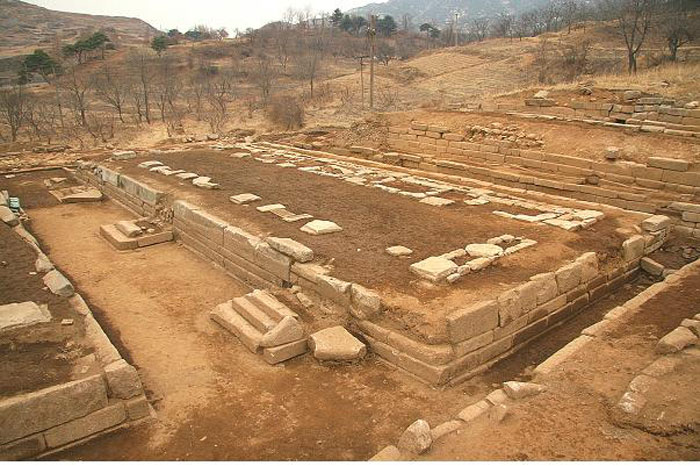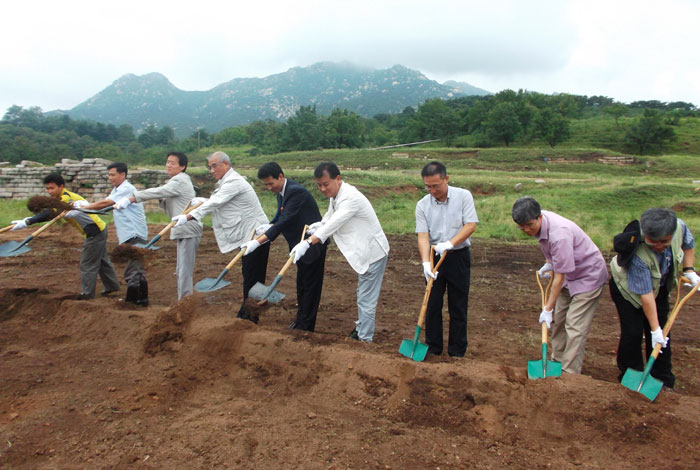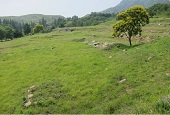-
 Korea.net's 24-hour YouTube channel
Korea.net's 24-hour YouTube channel- NEWS FOCUS
- ABOUT KOREA
- EVENTS
- RESOURCES
- GOVERNMENT
- ABOUT US

The palace ruins at Manwoldae from the Goryeo Dynasty (918-1392) are unearthed in 2008 as part of the inter-Korean joint excavations.

Archeologists and historians from both Koreas begin joint excavations in July 2014.
Manwoldae is the site of a royal palace from the Goryeo Dynasty (918-1392). The founder of Goryeo, Wang Geon (왕건, 王建) (877-943), selected Songdo, today’s Gaeseong or Kaesong, as his capital in 918, the first year of the new kingdom. The palace was built in 919 after two years of construction. It was later destroyed in 1361 during the Red Turban invasions of Goryeo (1351-1368).
Historians and archeologists from both Koreas have been taking great interest in the excavations of the official palace site at Manwoldae. For this reason, the joint research activities will be resumed this month.
The association of historians of the two Koreas will conduct joint research at the Manwoldae palace site from June 1 to November 30 this year.
The target research area is the presumed location of the Mallyeongjeon (만령전, 萬齡殿), the royal bedchamber. Once this year's excavations are complete, about half of the palace's total 33,000 square meters will be unearthed.
Approximately 80 people, including members of the association, will visit North Korea during the research period. About 15 experts on cultural heritage research will stay at accommodations inside the Gaeseong Industrial Complex. The other participants will make daily visits to the North during the dig.
The Ministry of Unification said, “The government has been approving private-level social and cultural exchanges between the two Koreas. In the future, we will continue to actively support such exchanges, such as the joint excavation at Manwoldae in Gaeseong.”
Joint excavations at Manwoldae took place four times between 2007 and 2010. Researchers discovered many valuable findings, such as the locations of each palace building, the remains of roof tiles and pieces of cylindrical celadon pottery. In 2011, they jointly restored the remains of some of the building sites and stonework that had been damaged by heavy rainfall. Joint excavations restarted in July 2014 for about 20 days.
By Yoon Sojung
Korea.net Staff Writer
Photo: Cultural Heritage Administration
arete@korea.kr
Related Contents
Most popular
- First hearing-impaired K-pop act hopes for 'barrier-free world'
- Event 'K-Beauty Hang Out' draws hundreds in Philippines
- Ceremony in Seoul inducts 2,641 content creators of Korean culture
- 'Mad Max' director impressed by 'cinema-literate' Korean viewers
- Cultural spring festival Seoul Festa to start on May 1














